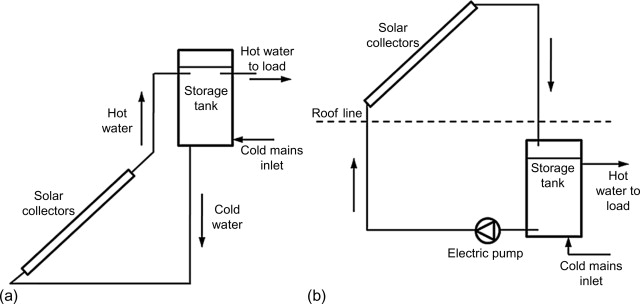
Solar Energy Storage System
Solar energy storage systems allow you to reduce your reliance on the grid and increase your self-sufficiency. They also provide backup power during foggy or cloudy days and in the event of a grid outage.
Batteries work by converting chemical energy into electric energy. They consist of two electrodes – the cathode and anode – separated from each other by a separator that is filled with electrolyte.
Solar Panels
Solar panels generate electricity by absorbing the sun’s energy and turning it into electrical currents. These electrical charges can then flow through a home’s energy system, reducing reliance on the power grid and providing backup in the case of a utility power outage.
When coupled with a battery storage system, solar panels can store any excess energy generated on a sunny day for use at night, during peak demand charges (when utilities typically charge higher electric rates) or in the event of a power outage. Solar batteries are typically made from lithium ion technology, and they can be wired using either direct current (DC) or alternating current (AC) coupling.
Battery systems are able to store solar energy through a series of chemical reactions that move lithium ions into and out of an electrolyte solution within the battery’s Solar energy storage system cells, creating electrons. When the battery is charged, those electrons can be used to power homes and businesses.
Many homeowners choose to install a solar energy system because they want to protect themselves from rising electric utility rates or to minimize their reliance on fossil fuels. While stand-alone solar is still an excellent choice, pairing it with a battery helps homeowners take full advantage of the benefits that clean, renewable solar energy can offer.
Inverter
The solar battery inverter is the brains of your storage system, converting the direct current (DC) coming from your batteries into AC power. This is what your household appliances require to function. It also regulates energy peaks by releasing stored energy when the grid is putting out more electricity than your solar panels are producing.
The GE and Delta inverters we carry offer more than just basic energy conversion: they can provide system-level services such as demand response, grid balancing, peak shaving, and even backup power in the event of a utility outage. They can also integrate with a range of third-party batteries.
Without battery storage, all the electricity that your solar panel systems produce must be used right away. This can cause a problem when peak energy use in the evenings coincides with decreasing solar production. When this happens, grid operators may take some of your solar energy offline to avoid over-generation and grid reliability issues. Adding solar battery storage allows you to store this energy and dispense it at the times of highest demand, like after sunset or during a cloudy day.
Depending on your utility rates and other factors, this can save you money by offsetting Time-of-Use charges or eliminating utility peak demand charges entirely. It can also help you stay comfortable and safe during a utility outage.
Batteries
When paired with solar panels, batteries store energy as chemical energy and release it when needed (most often at night and during power outages) to keep appliances and fixtures running. Home solar batteries are typically lithium-ion, but new battery technology Solar energy storage system is rapidly expanding and improving the options available for home solar systems.
Solar energy storage is a critical component of clean energy because it matches variable energy supply with demand. Without battery backup, solar energy is only able to provide power during the daytime when sun is shining. But with the addition of a battery, solar is able to provide power at night and on cloudy days as well.
As the demand for solar energy grows, utilities are increasingly turning to battery storage for value-added services. These include smoothing electricity prices through arbitrage, managing evening energy ramps, mitigating curtailment risk and more. Solar + storage can help utilities provide these value-added services and improve the grid’s reliability.
Adding battery storage to your solar system can help you take advantage of these utility-provided benefits while still enjoying the financial and environmental benefits that come with clean, renewable solar energy. Your solar installer will explain your specific energy needs and options, including federal tax incentives, and recommend a solution that best fits your household. In addition to federal solar incentives, many states and localities offer additional rebates and tax credits for solar with battery backup.
Controls
Like any electronic device, solar energy storage systems require proper controls to ensure they work as expected. This includes a charge controller that helps prevent overcharging batteries, which reduces their lifespan. It also controls the flow of energy between a PV system and battery. Other devices are used to optimize and monitor battery performance. This includes a monitoring system that provides data on system operation and performance, such as capacity; state of charge; temperature; and other key metrics.
Energy storage systems can be configured to perform a range of functions for your home or business, such as peak shaving and load shifting. A battery is charged by solar during the day and discharged at times of high usage, lowering or eliminating demand charges from your utility provider. It can also be installed in a solar-plus-storage system that connects to your existing PV system, allowing you to add on to your energy savings with ease.
Large scale grid-connected storage is also being used to provide voltage regulation in distribution circuits. Located in an urban SCE right of way in Santa Ana, the 1.4MW/3.7MWh DESI 2 system supports local reliability by improving circuit voltage control, which impacts power quality. Other uses include providing backup during the hottest months, when SCE experiences higher energy demands from businesses and homes operating air conditioners.
